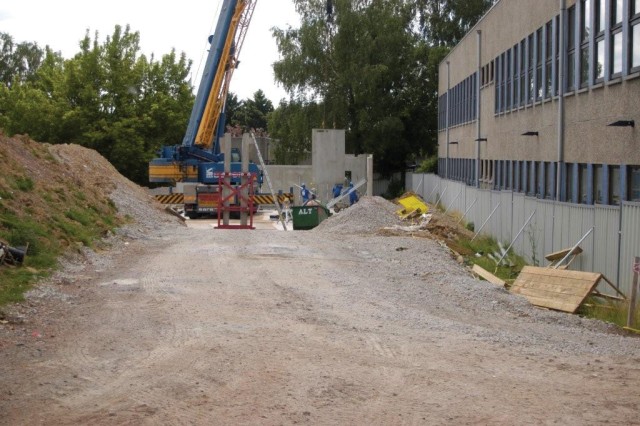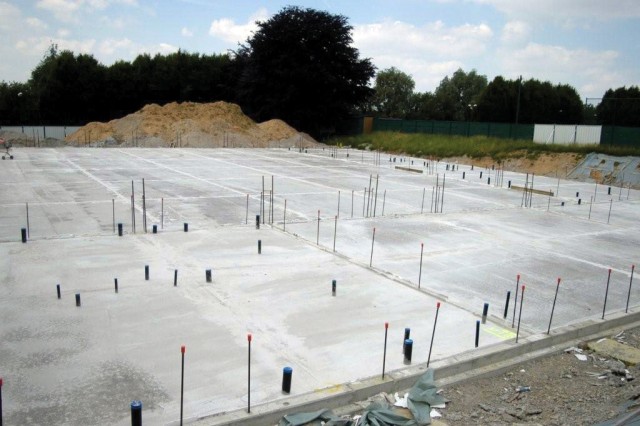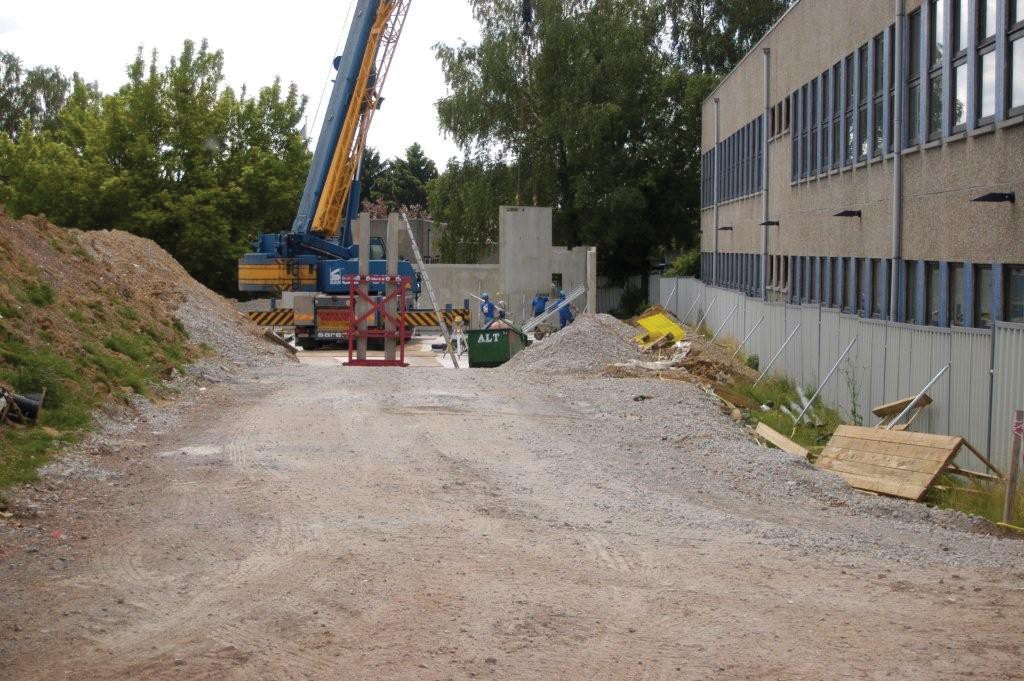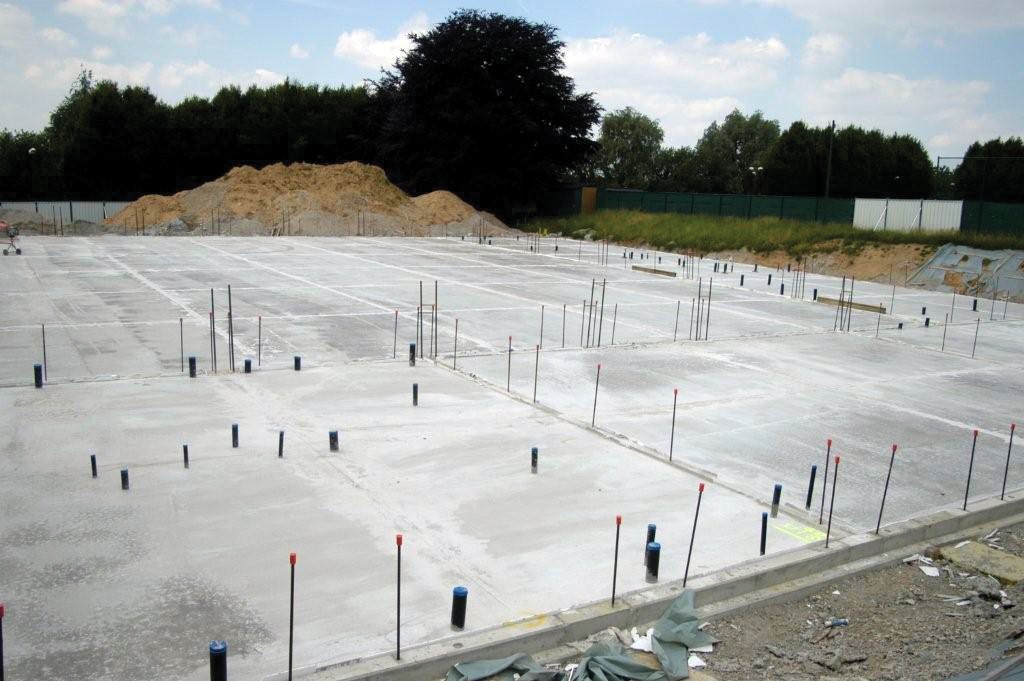BRUSSELS, Belgium - The NATO-related U.S. footprint in Brussels dates back to 1967, the year NATO Headquarters completed its move from Paris and the year the current Boulevard Leopold III headquarters was inaugurated.
Two U.S.-support entities were established at that time to support the U.S. presence. The first was the Army's NATO Support Activity (the predecessor activity of U.S. Army Garrison Brussels). The second was the Brussels American School, a U.S. Department of Defense Education Activity, which was established to provide for the educational needs of children whose parents were in Brussels because of NATO.
The garrison was first located in facilities in downtown Brussels near the Gare du Nord. These Army facilities began a gradual migration eastward in 1971, until consolidation began in 1976 at the current site in Sint Stevens Woluwe.
The current garrison compound occupies a leased site, which originally contained only one building, the current Bldg. 1. Three other buildings were built under Army auspices, with the last completed in 2001.
With the completion of Bldg. 4, which houses such diverse entities as the garrison Library, Housing and Personal Property offices, ACS and the AAFES retail operation, the existing site's ability to accommodate expansion was essentially exhausted.
"We really are tapped-out for space at our main site," explained Public Works Director Roger Preciado. "We can muck around the edges - for example, convert an old outdoor basketball court into a children's playground - but there really isn't any room for expansion."
NEED FOR EXPANSION
Given that the Brussels community has maintained a fairly steady population size for decades, the question might be asked why there is any need for expansion. "That's a fair question, to which there are several inter-related answers," said Brussels Garrison Commander Lt. Col. Darin Conkright.
"First, we really are squeezed for space in our current compound, which directly impacts our ability to serve the community. As just one example, we're right at the limit with parking. Anytime we host a special event for the community, it's a drill for our patrons. I get a small, but steady, stream of complaints on this issue," he said.
The second reason is the generally higher expectation of services from within military communities. "The Army and the other services have, over the past few years, made a conscious decision to improve the quality of life for Servicemembers and their Families," explained Conkright. "This inevitably means an increase in size and quality of infrastructure, and even a small infrastructure change has to be accommodated somewhere."
The final reason is a subtle demographic one. While the absolute numbers of the Brussels population base have not substantially changed, there has been a definite change in distribution, along with a change in needs.
"Since I've been in Brussels, a recurrent theme from parents has been the need to address the needs of the pre-high school youth population. We've tried to be responsive to that part of our community," Conkright noted.
Unlike traditional U.S. military installations, the Brussels Garrison sits on very little real estate. As previously noted, the existing Garrison compound located in Sint Stevens Woluwe is a leased complex. The Sterrebeek Annex, in the township of that name, hosts the Brussels American School and the SHAPE Branch Health and Dental clinics. The Annex real estate is actually owned by the U.S. Army, a fact not widely known in the community.
NEW CONSTRUCTION
The Sterrebeek Annex has been experiencing its first significant new construction since it was acquired in the 1960s. Ground was broken on Dec. 4, 2008, for the first major new construction in the 42-year history of the Brussels American School. A new BAS gymnasium and art complex are currently under construction.
In excess of $6.5 million is being spent on the two structures, which are expected to be ready for use by June of 2010. The construction work has inevitably been dirty and noisy and has disrupted school traffic patterns and parking, wiping out tennis courts, and it has broken up some existing features, such as the playground.
Janet Fry, the school's registrar, has lived in Brussels since 1986, worked at BAS since 1997, and all three of her children are BAS alumni. "The construction work has upset our routines, but there's no easy way for us to get an improved gym or arts center, so I'm all for it," she explained.
The benefits of the new construction transcend the Brussels American School, and accrue to the broader community, as well. The existing school gymnasium - currently, the only large organic indoor sports facility available to the community-at-large - will be ceded to the Brussels Garrison after completion of the new BAS gym.
The Army has already invested in improving the old gymnasium floor. Because of weather, indoor sports are an important aspect of Brussels life. "We're really looking forward to expanding our indoor sports offerings to community adults, and the old gym will greatly help us there," said Conkright.
FUTURE CONSTRUCTION
Construction of the new BAS gymnasium and arts center is well in hand. Authorization and out-of-cycle funding was recently received to allow planning for development of a Youth Center, to be built on Sterrebeek Annex grounds.
This Youth Center, a garrison asset, has been part of the "way forward" concept for several years, and is intended to complement school assets. Numerous potential synergies are expected by having the new center be co-located with BAS. Construction of this facility will begin no earlier than Fiscal Year 2010.
The proposed Youth Center comes at a cost - the only available building site would wipe out the two existing softball fields. "Softball is an extremely popular Brussels Community spring and summer sport," explained Conkright. "We're very conscious of that. We hope to compensate for those fields by leasing farm land on the east side of the Annex and building softball fields there. The owner of the farm land wants to lease to us, but we need to get the Belgian government to agree to a new zoning arrangement."
The U.S. Embassy is involved in negotiations with the Government of Belgium on this issue, with resolution expected in calendar year 2010.
Anything else in the crystal ball' Most Brussels Community members know that the buildings at the old Belgian Air Base across the street from the current NATO Headquarters have been torn down and the ground prepared for construction. Bids for a contract worth 640 million euro are being taken this year. Once approved, construction is estimated to take 50 months. Both old and new NATO HQ sites are on land belonging to the Belgian Ministry of Defense.
Conkright said that very preliminary contact has been made with the Belgian MoD as to the possibility of the U.S. Army being allowed to use some of the land and buildings that will remain when NATO HQ moves to its new site in the next decade. The recycling of former NATO facilities would, notionally, allow the Garrison to increase its cramped physical plant at low cost.
Additionally, it would move the Garrison, whose mission is the support of the U.S. representation at NATO HQ, closer to its reason for being.
Conkright cautioned that this is "way" in the conceptual stage. It has, however, been briefed at several levels, and the fact that it has not been dismissed is encouraging.
"I can't predict whether this will happen," he said, "but the fact that we're briefing it sends a strong message to a lot of people that we're here to stay," he said.




Social Sharing